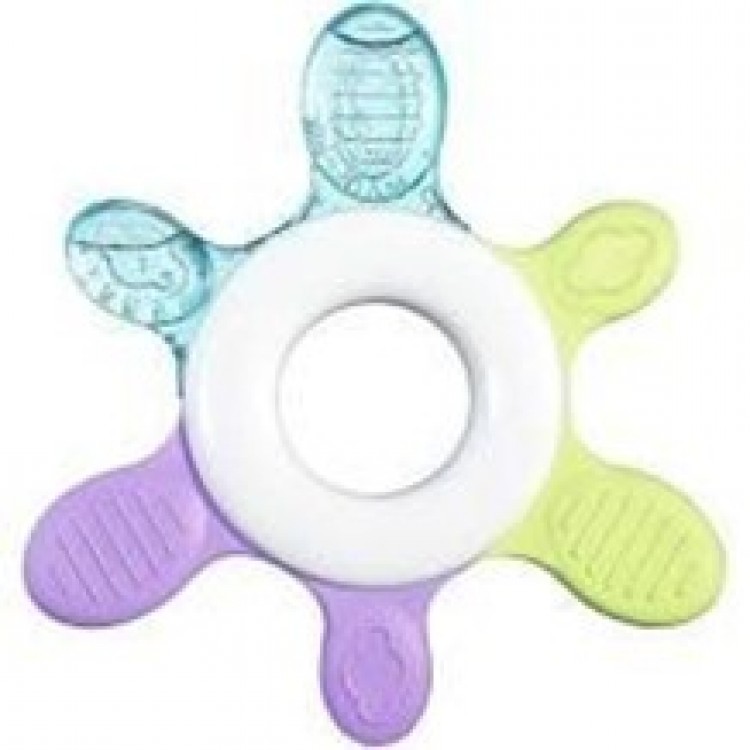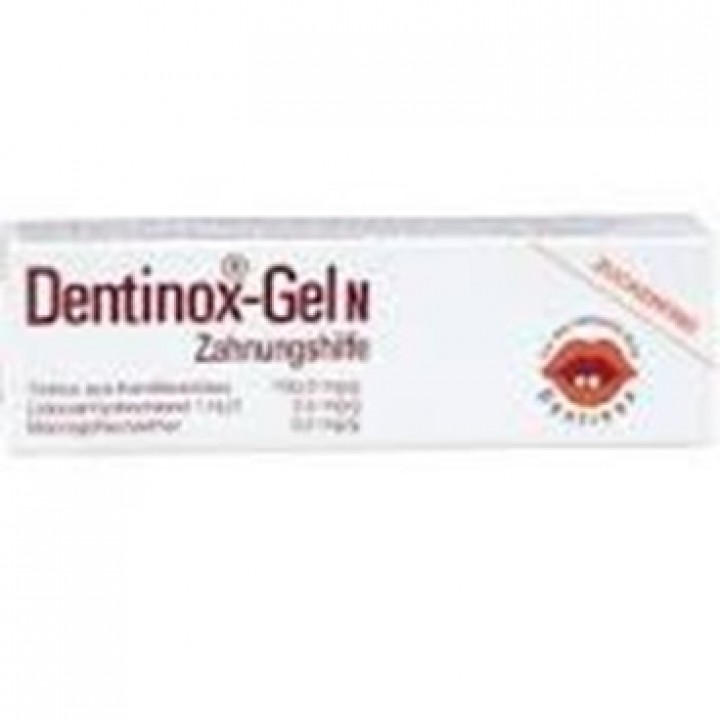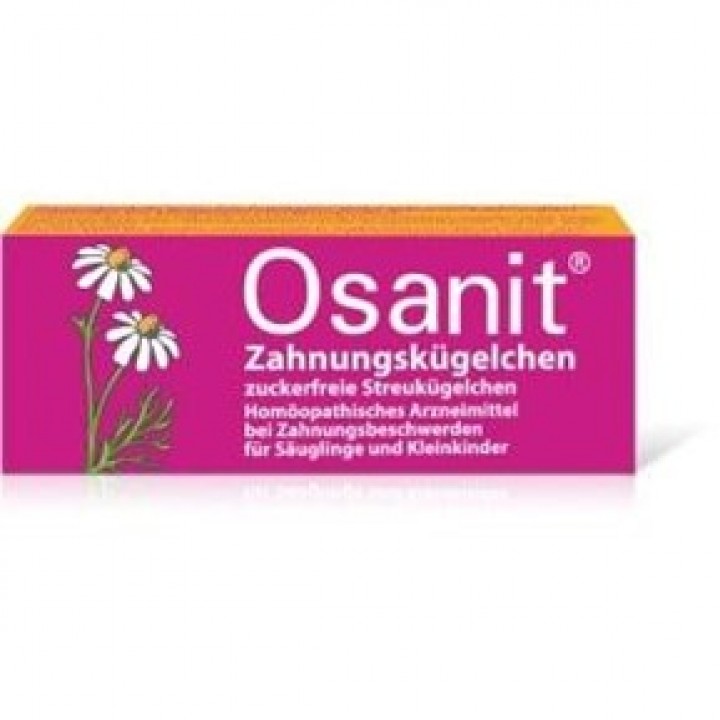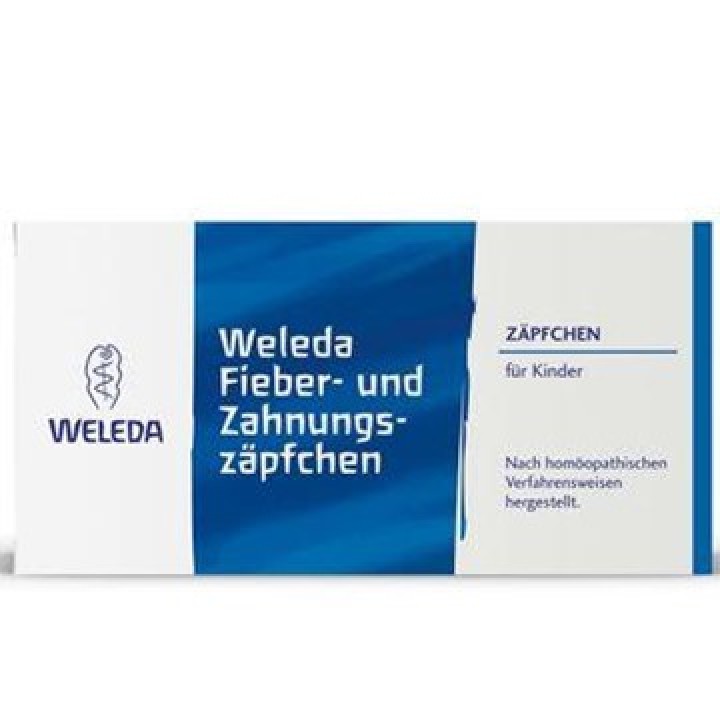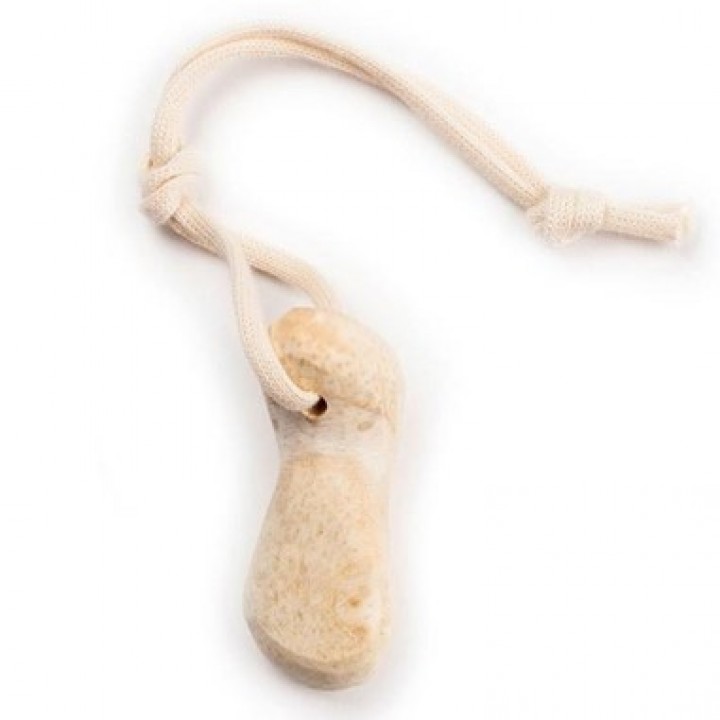Teething - an overview
An overview and some tips about how to handle the first teeth coming through.
General information on teething
Who hasn't heard the saying: "that's another new developmental step"... Sometimes we as mothers can't hear it anymore. What else is coming? Is everything ok with my child?
It's the same with teething. It is different for every child - sometimes it is completely unproblematic, but sometimes it is an extremely stressful time.
Most parents eagerly await the appearance of the first white tooth in their child's mouth.
Normally, the first tooth appears around the sixth month of life.
The teething process is long and often takes months. The appearance of the first tooth varies greatly, mainly due to genetics. In the long run, however, the time does not matter.
Even before birth, the milk teeth are already laid down in the jawbone. In stages, eruption begins with the central incisors in the lower jaw.
- Central incisor: between 6th and 8th month
- Lateral incisor: between 6th and 12th month
- First molar: between 12 and 16 months of age
- Canine teeth: between 16 and 20 months of age
- Second molar: between 20th and 30th month
Only between the 20th and 30th month is the milk dentition complete with a total of 20 teeth.
how can I tell that my child is teething?
Not all of them show the same behaviour. Some children have their first teeth almost without any accompanying symptoms and others have severe pain.
Here is a list of possible symptoms you can observe:
- Your child is cranky and cries more than usual
- Increased salivation
- The gums may be red and swollen
- Your child puts many objects or even his or her own hand in his or her mouth.
- Cheeks may be red and hot
- Your child is not eating as well as usual
- Your child does not drink as much as usual (please make sure he/she drinks enough!)
- Your child sleeps less well
- Your child's bowel movements have changed
- Your child may have a slightly elevated temperature.
- Your child is more clingy than usual and seeks physical contact.
- Your child's bottom is red and sore.
Sometimes symptoms can occur that are not caused by teething itself.
- Your child may have small cysts in the mouth. These are blisters that form over the tooth that is coming through. They are usually filled with blood and are blue-red in colour. They burst as soon as the tooth comes through.
- Some children develop a rash on their face. This is due to the body's immune response to teething and the increased blood flow to the facial area.
- We often hear that children have diarrhoea or vomiting. The cause is usually a superimposed gastrointestinal infection. Because the body is very busy with teething, children are much more susceptible to infections during this time.
If you have the feeling that an infection has developed, or a symptom is more severe than described, please go to your paediatrician for a medical assessment.
How can we help our baby?
We have put together a few tips below to help us support our children. Every child needs something different and not everything helps everyone. Just try a few tips and see what helps your little one the most.
- A massage and physical attention often do children a lot of good. Try massaging the baby's toes and the balls of their feet to relax your child.
- There are special finger stalls (in the drugstore or pharmacy) with which you can gently massage the palate and the chewing area. These are usually made of silicone.
- The increased flow of saliva often leads to sore corners of the mouth. This makes it all the more important to use a care cream there. Helago oil, for example, works wonders there.
- Sore bottoms can be avoided by changing nappies frequently and possibly using healing wool. There are also good protective creams, such as Mirfulan.
- There are some aids that the child can chew on independently. You can find them in every drugstore and pharmacy. Here are the favourites that my children had:
Please refer to the pictures in the gallery - they are named for easier reference if you put your cursor on them.
The teething ring (Beißring)
There are even teething rings that can be stored in the refrigerator. The cold also helps the children. The swelling is reduced. When buying, please think about tested quality. Soft teething rings must always be free of PVC and manufactured without plasticisers. This means that no harmful substances can come out of the material and there is no risk of the ring breaking during use.
A wet cloth:
Wet a cloth (cold) and give this your baby to chew on.
Amber Necklace
And for the sake of completeness, the amber necklace (Bernsteinkette). This is very controversial. I have never tried it. It is not clear whether such a necklace can help. However, it is considered proven that amber contains many essential oils that can have a beneficial effect on baby's organism. That is why amber oil is also quite often used for massage. It increases the blood flow and is calming. Here, too, it is important to pay attention to quality. These chains are not available in jewellery shops, but only in baby shops or pharmacies. There are be special requirements and safety features you need to take care off like to take it off when the baby sleeps at night. Make sure to be familiar with them.
Violet root (Veilchenwurzel):
Also for the sake of completeness - for centuries, violet root has been used to help teething children. However, the name is misleading: it is not the root of violets, but the root of the iris. But the root smells like violets. This contains slightly anaesthetic substances that are released when the child chews on the root. Here, however, care must be taken to clean the root regularly so that germs cannot multiply , but cooking it regularly will change the consistency. Plus, it is possible that little pieces will break off (choking/child safety). Therefore, we do not recommend this. If in use, please do not leave your child unattended at any time.
Amber Necklace
And for the sake of completeness, the amber necklace (Bernsteinkette). This is very controversial. I have never tried it. It is not clear whether such a necklace can help. However, it is considered proven that amber contains many essential oils that can have a beneficial effect on baby's organism. That is why amber oil is also quite often used for massage. It increases the blood flow and is calming. Here, too, it is important to pay attention to quality. These chains are not available in jewellery shops, but only in baby shops or pharmacies. There must be special requirements and safety features.
Homeopathic & other remedies
Please always consult a trained doctor or pharmacist for the exact indication and dosage.
There are also some herbal and homeopathic remedies that can support teething.
Zahnungsöl - Teething Oil - can be used to gently massage your babies jaw from the outside. You can get this in a pharmacy.
Globuli mobilise the child's self-healing powers. These globule preparations are often used.
- Chamomilla
- Calcium phosphoricum
- Magnesium phosphoricum
- Creosotum
- Belladonna
I gave my children a combination preparation: Osanit. It contains five active ingredients (Chamomilla recutita D6, Calcium phosphoricum D12, Magnesium phosphoricum C6, Calcium carbonicum Hahnemanni C8, Ferrum phosphoricum C8).
There are also homeopathic substances as suppositories - Weleda Fieber und Zahnungszäpfchen.
In addition to anti-inflammatory camomile tincture, Dentinox contains local analgesic active ingredients in a dosage suitable for children.
The gel is applied to the breakthrough site and has a local and pain-relieving effect there. I loved it. BUT also here only use this sparsely and not too often.
How do I care for the first teeth?
First of all, it is enough to clean the first teeth regularly with a finger toothbrush, a cloth or cotton swab. When buying toothpaste, make sure that it is specially formulated for babies. The first visit to the dentist can be made when the first tooth comes through. At first, it's just a check-up, but then the children and parents get used to the semi-annual visit in a relaxed way.
June 2022 - UPDATE Gravidamiga
This blog post has been prepared with the greatest possible care and does not claim to be correct, complete or up-to-date.“
This is not a sponsored post and just our own research for all of you - it does NOT substitute a visit to a doctor.
Tell someone of us today - thank you!
https://www.instagram.com/gravidamiga/
https://www.facebook.com/gravidamiga
and sign up for our weekly Gravidamiga Newsletter.
or check out our partner Page for more general information about life in Stuttgart with an extensive blog:
Kiramiga - beyond relocation.
We love what we do and hope you love it, too.
Please support us and our work by donating us a coffee or a prosecco :-)
Thank you.
Updated: July 2022
Posted in in Babies & Toddlers


